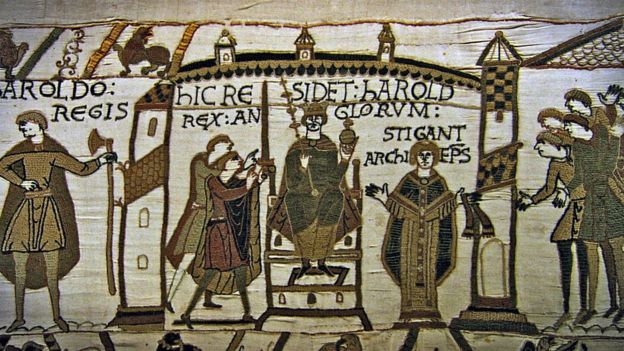Link: https://www.youtube.com/watch?time_continue=218&v=LtGoBZ4D4_E
Publication: Nikola Benin, PhD
Historians have long debated the origins of the tapestry, which is 70m (230ft) long and 50cm high.
The earliest written reference to it is an inventory from Bayeux Cathedral in 1476, but little is known about how or why it was created.
According to Reading Museum, which houses a replica of the tapestry, it was "probably commissioned" in the 1070s by the half-brother of William the Conqueror - the Bishop Odo of Bayeux.
Some say it was created by teams of nuns across England - not France - possibly in Canterbury, Kent.
In 2012, a PhD researcher at the University of Manchester said the artwork's needlework was "consistent throughout", suggesting one group of specialist embroiderers worked on it, in the same place at the same time.
What does it depict?
The tapestry shows the events leading up to the Norman takeover of England.
It starts with Edward the Confessor, who became king in 1042, on the throne and tells the story of his death and the questions over who was the rightful heir.
In 1066, on the day of Edward's funeral, his brother-in-law Harold was crowned king.
News of his appointment reached France and William of Normandy, who claimed he should be king as Edward had promised him the throne of England.

On 14 October 1066, William I and King Harold II came to loggerheads at the Battle of Hastings - one of the most famous battles in English history.
It is likely both sides had between 5,000 and 7,000 men each when they met in battle at a hilltop near Hastings.
Thousands of soldiers were killed in a day of a fighting, which ended in King Harold II's death.
It was a turning point in history as it ended the Anglo-Saxons's long reign of more than 600 years.
Няма коментари:
Публикуване на коментар